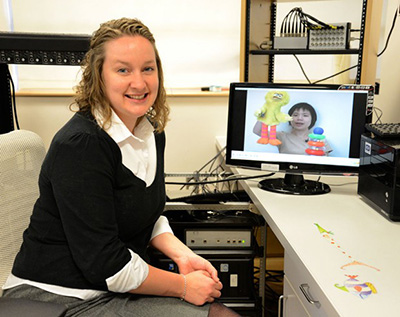 A new study conducted by the UW, Temple University (TU), and the University of Delaware (UDEL), has found that children are able to learn more effectively through live interaction and video chat technology such as Skype, as opposed to watching a traditional educational video.
A new study conducted by the UW, Temple University (TU), and the University of Delaware (UDEL), has found that children are able to learn more effectively through live interaction and video chat technology such as Skype, as opposed to watching a traditional educational video.Before coming to the Institute for Learning and Brain Sciences at the UW (I-LABS), Sarah Roseberry conducted the study at Temple’s Infant Lab as part of her dissertation study as a graduate student.
“We were interested in how kids learn language. One of the things we know is that kids seem to learn really well from live social interaction with other people, so we were interested in figuring out exactly what it was about social interaction that was working for kids,” Roseberry said. “One thing we thought about was this idea of the turn-taking component of social interaction, which is something that we call social contingency. It’s this sort of back and forth responsiveness that naturally occurs in live social interaction.”
The study consisted of 36 toddlers ages 24-30 months, who were exposed to three types of learning conditions: live social interaction, video chat, and traditional video. Twelve toddlers were placed in each of the three learning conditions, and were taught new words for actions such as blicking and frepping. Nonsense words were used to control for children’s prior knowledge of the meaning of actual words.
After being exposed to one of the three learning conditions, toddlers were given a “test” to demonstrate what they learned.
Click here for the full article.
Click here for a news story on the research.